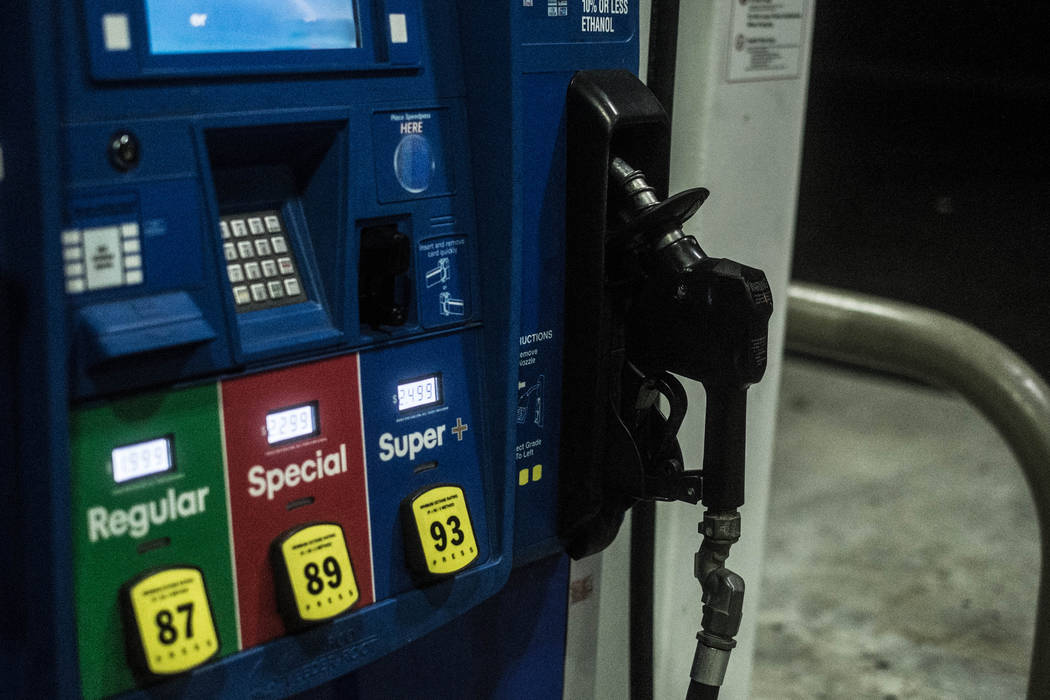
As U.S. gasoline demand strengthened and supply declined, the national gas price average jumped two-cents on the week to land at $2.86, AAA announced this week.
According to the latest Energy Information Administration report, total crude inventories fell on the week and now register at 405 million barrels, which is 80 million barrels lower than levels at the same time last year.
“As crude and gasoline inventories tighten, motorists can expect gas prices to trend higher and remain volatile,” said Jeanette Casselano, AAA spokeswoman. “On the week, pump prices increased as much as 11-cents for some states with others seeing decreases of up to four-cents.”
While the July 30 gas price average is one-cent less than last month, it is 55-cents more than a year ago and crude oil prices are up $20/barrel compared to this time last year.
Nevada is included in nation’s top 10 most expensive markets: Hawaii ($3.78), California ($3.62), Washington ($3.40), Alaska ($3.37), Oregon ($3.29), Nevada ($3.20), Idaho ($3.11), Utah ($3.09), Connecticut ($3.07) and Washington, D.C. ($3.05).
The nation’s top 10 largest weekly changes are: Michigan (+11 cents), Indiana (+9 cents), Ohio (+8 cents), Kentucky (+6 cents), Illinois (+4 cents), Kansas (+4 cents), Delaware (-4 cents), New Mexico (-3 cents), West Virginia (+3 cents) and South Carolina (+3 cents).
Pump prices in states in the West Coast region are among the highest in the country: Hawaii ($3.78), California ($3.62), Washington ($3.40), Alaska ($3.3), Oregon (3.29), Nevada ($3.20) and Arizona ($2.92). Yet on the week, all gas prices in the region are down. Arizona (-2 cents) saw the largest decrease. Washington, Nevada, and Alaska are close behind as each dropped by a penny.
In Pahrump, as of Monday, gas prices ranged from $2.77 to $2.89, a survey by gasbuddy.com shows. Prices in Tonopah ranged from $3.30 to $3.59. In Beatty, the survey found gas at $3.15.
According to Energy Information Administration’s petroleum status report for the week ending on July 20, inventories of gasoline in the region grew by 300,000 barrels. They now sit at 30.6 million barrels, which is nearly 3.5 million barrels higher than total levels at this time last year. The surplus will likely help guard against price spikes in the event that supply tightens in the region this week, AAA said.
Oil prices trended higher with the release of Energy Information Administration’s weekly report that total crude inventories fell by 6.2 million barrels and face a year-over-year deficit of 80 million barrels.
The tightened domestic crude supply amid robust global gasoline demand and high global crude demand will likely sustain into the near future the more expensive crude oil prices, which are $20/barrel more compared to last year.
Additionally, the market will look at EIA’s supply data and July crude production data from OPEC and its partners — both of which will be released later this week — to determine how supply and demand are faring since the cartel announced that it would increase production to ease global crude price growth.
Moreover, according to Baker Hughes Inc., the U.S. added three oil rigs last week, bringing the total to 861. Currently, there are 95 more active rigs this year than last year at this time.